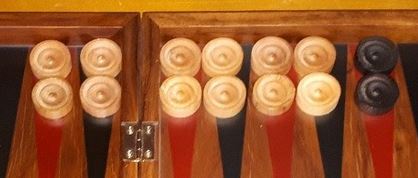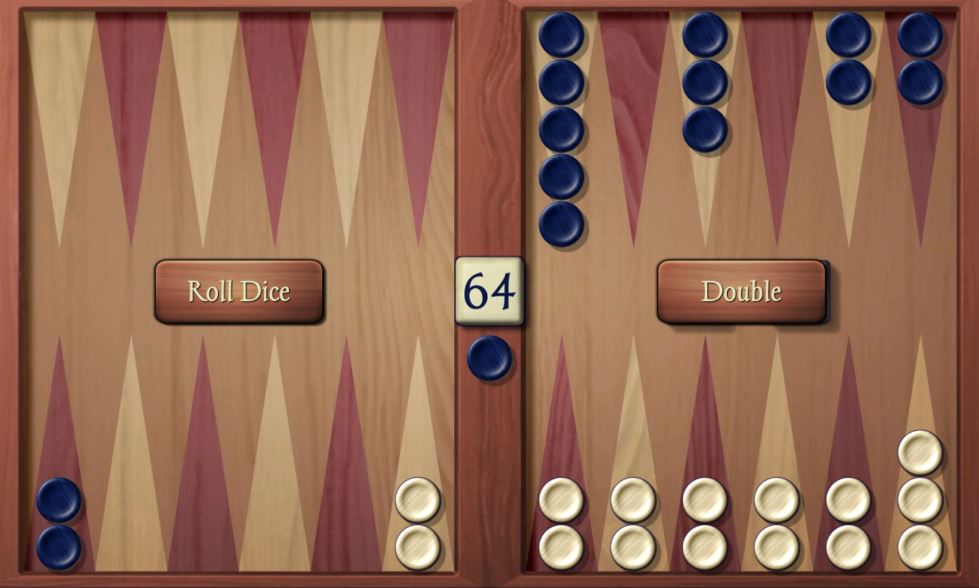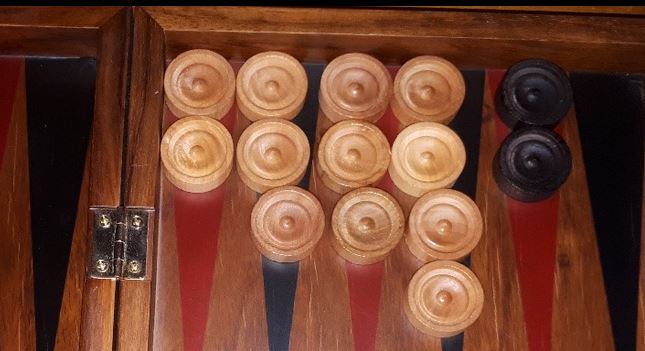Last updated on May 8, 2024
In this Deluxe Backgammon post, we will take a more detailed look at the priming strategy. This post is aimed at beginners, most intermediate and advanced players will already be familiar with this topic. Understanding the backgammon priming game is critical for those who wish to improve their game.
In a priming game, you secure several consecutive points to block your opponent’s rear checkers from escaping. The backgammon starting position already gives you the eight and six points around which to build your prime. Ideally, you will then start filling the gaps and building a bigger barricade. The more home board points in your prime, the stronger your position will be. This is because secure home board points not only block, but can also prevent re-entry from the bar. The ideal position is to trap your opponent’s checker behind a six-prime, which is impossible to escape. Better still is a six-prime in your home board with an opponent’s checker on the bar. It’s impossible for them to re-enter and they forfeit their turn. At that point, your home board is said to be closed.
Opening moves
Some of the better opening moves (3-1, 4-2, 6-1, 5-3) are perfect for triggering the priming strategy. Each of these moves creates a secure point within your home board or on the bar point. Two of these moves (3-1, 6-1) actually create a secure point and a 2-prime. Of all of these rolls, the 3-1 is best as it creates a 2-prime and secures the 5-point. The 3-1 roll is the perfect start to the game and the priming strategy should come into consideration after this roll. The 6-1 also creates a 3-prime on the bar-point between the 8 and 6-points. However, this is not quite as strong because it doesn’t create the blocking point in the home board.
Primes
Priming games are common and it’s a strategy that should be understood by all, except for complete beginners. It is an essential strategy to have at your command should you want to be a competitive player. The best way to defend against a prime is to build one of your own. As already stated, a prime is a series of connected secure points. The smallest possible is a two prime, which is not much of a barrier. Primes consisting of four or more consecutive points are much more effective. It is possible, but extremely rare to see, a seven-prime. Slotting is a useful tactic to help build primes.
There is a downside of having a long prime in that you have so much material invested in the blockade. A six-prime, for instance, consists of at least twelve out of your fifteen checkers. Imagine, that two of your remaining three checkers are trapped on the other side of the board behind your opponent’s six-prime. This leaves only one checker free to move, which can cause timing issues.
Timing is concerned with maintaining a favourable position for as long as possible. The backgammon player who is able to maintain their better position for the most turns has an advantage over their opponent. This is because that player will have more time to execute their chosen strategy. When you lose your timing and you are forced to break down your prime it is said that your position has become crunched.
Breaking the prime
Eventually, you will be forced to break up your prime. This can happen on both sides of the board simultaneously and create some extremely volatile gameplay. In general, the player that maintains their prime the longest will be most likely to win the game. To avoid breaking your prime you should move the other checkers that are not part of the prime. Another option is to move extra checkers on your prime. If a point in your prime has more than two checkers you should move that one instead. Remember that keeping your prime for the longest time possible is the key to winning a priming game.
If you are forced to break your prime you should definitely play more aggressively and hit wherever possible. Your opponent will be in the lead if you break the prime, which warrants an aggressive play in order to catch up. Understanding the principles behind the priming game is essential in backgammon basics.
Trapped checkers
For those checkers that are trapped behind the prime, should be moved as close as possible to the front of the prime. This will allow them to escape at the earliest opportunity. For example, if your opponent has a five-prime extending from the 8-point to the 4-point and your back checkers are on your 24-points. It is impossible for your checkers to escape with a single dice roll. You would need a roll of a 2 and a 6 to escape a single checker and a double 6 is useless. However, if your checkers are secure on your 22-point, you can escape a checker with a roll of 6. A double 6 would allow both checkers to escape.
These are the basics of a priming game. Once you have built your blocking prime, the key thing to remember is to maintain your prime longer than your opponent. If you can force your opponent to break up their prime first, you suddenly gain the upper hand. You can escape whilst their checkers remain trapped and you are a step closer to victory.
Related content
Priming a back game by Gammon Press.




Is priming the best strategy for beginners to learn?
Priming is a great strategy for beginners to learn. However, there are 5 strategies that beginners should try to learn, priming, racing, blitzing, holding and back game. Thanks for commenting.
I have a question about the 3-1 roll being better than the 6-1 roll. I understand the idea that 3-1 is better because it secures a point on the home board.
My counter argument would be that creating a 3-prime on the bar-point has it’s own advantage. It seems to do a better job of trapping the opponents back checkers, since those tend to escape on 6-2, 6-3, 6-5 type of rolls. Often if those rolls can’t be used to run the back checkers, it forces the opponent into a very sub-optimal move like using the 6 dice on a 13-8 (which opens that checker up for a big hit).
Anyway, I’m beginner/intermediate so I could be totally wrong, but I’m interested in your thoughts on it 🙂
Hi Michael, interesting question and I know a few experienced backgammon players who have the same thoughts as you. However, securing the 3 point gives you the chance to block your oppoentn when re-entering from the bar. It also starts to begin a prime within your home board. Generally, keeping your opponent on the bar gives you a huge advantage, because they are basically wasting their turn, whilst you get ahead in the race. The maths generally supports this, if you look at the Backgammon, first player advantage post, you will see that XG Mobile Backgammon rates the 3-1 opening as the best move, even though it is just a small margin. This difference adds up over time and is applicable not just to the opening, but during the early stages of the game. There are exceptions, such as late in the game were you don’t want to break contact, but if you have a chance of hitting then home board points are always valuable because of the blocking potential. I hope this helps, thanks for taking the time to comment, Jason.